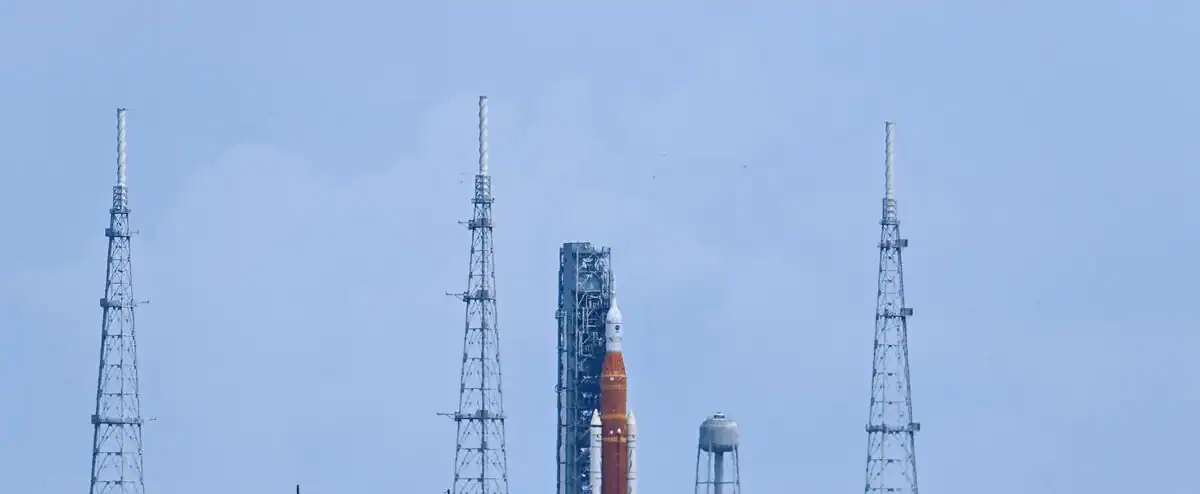The difficulties are related to the first takeoff of NASA’s new massive rocket to the moon.
• Read also: After repairs, a successful ground test of a NASA rocket to the moon
• Read also: Planetary Defense: Ship ready to collide with an asteroid to divert its course
• Read also: NASA again delays the launch of its rocket to the moon
After two failed launch attempts a few weeks ago due to technical problems, the new attempt scheduled for Tuesday for the Artemis 1 mission is now threatened by a storm forming in the Caribbean.
Not yet named Tropical Depression Nine, it is currently located below the Dominican Republic. But it is supposed to turn into a hurricane in the coming days, and rise across the Gulf of Mexico to Florida, where the Kennedy Space Center is from where the rocket will launch.
“Our plan (a) is to continue the course and do a takeoff on September 27,” Kennedy Center official Mike Bolger said Friday.
“But if we have to go to Plan B, we need a few days to focus on our current squad (…) and get the missile back to protecting its assembly building,” he added.
NASA closely monitors every weather report.
“We will likely make a decision no later than tomorrow morning (Saturday morning, editor’s note) or early afternoon,” Bolger said.
The orange and white SLS missile can withstand, on the launch pad, wind gusts of up to 137 km / h.
If shelter is to be provided, the current shooting period, which runs until October 4, will be missed. The next period runs from October 17 to 31, with the possibility of one takeoff per day (except from October 24 to 26 and 28).
This setback would be a blow to NASA, which has just overcome two other problems.
At the beginning of September, the take-off was canceled at the last minute due to a leakage of liquid hydrogen while filling the tanks with this fuel. The damaged seal has since been replaced, and NASA passed a ground test this week to verify repairs.
In addition, the US Space Force, which is responsible for public safety, has agreed to extend the certification period for the missile’s emergency self-destruct system batteries. This exception had to be granted in order to be able to take off on Tuesday, or on the backup date, October 2.
The shooting window is scheduled to open Tuesday at 11:37 a.m. local time for a period of 70 minutes. If it takes off on that day, the mission will last 39 days, until landing in the Pacific Ocean on November 5.
It will not carry astronauts, and Artémis 1 must be used to verify that the Orion capsule, located on top of the rocket, is safe to carry a crew to the moon in the future.

“Proud thinker. Tv fanatic. Communicator. Evil student. Food junkie. Passionate coffee geek. Award-winning alcohol advocate.”

